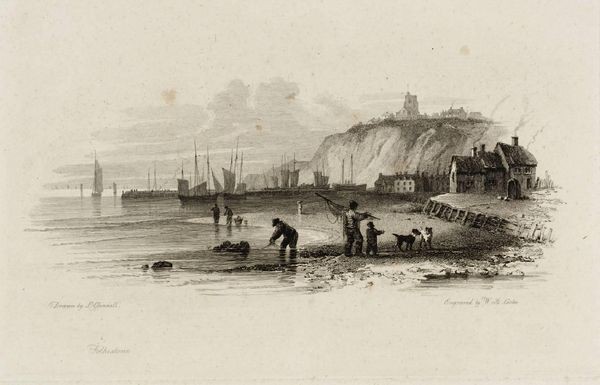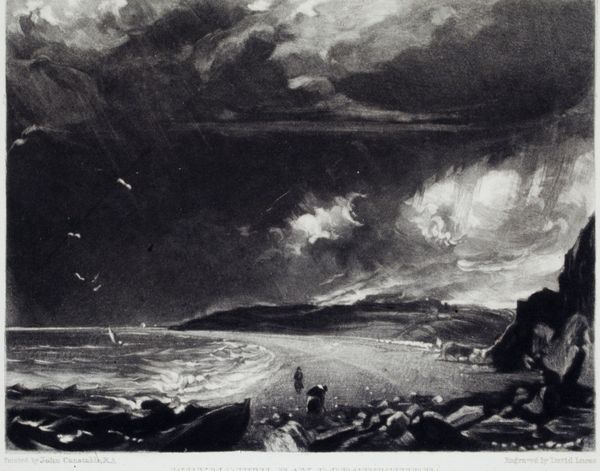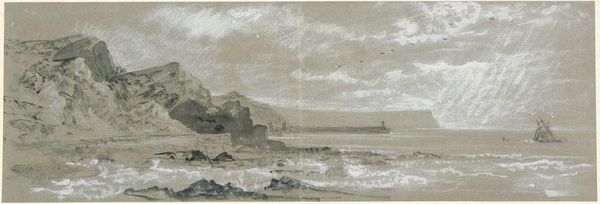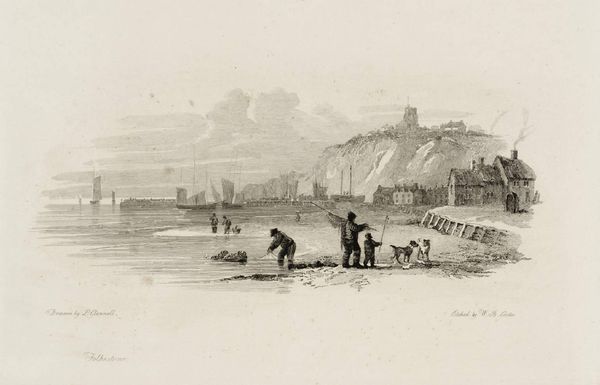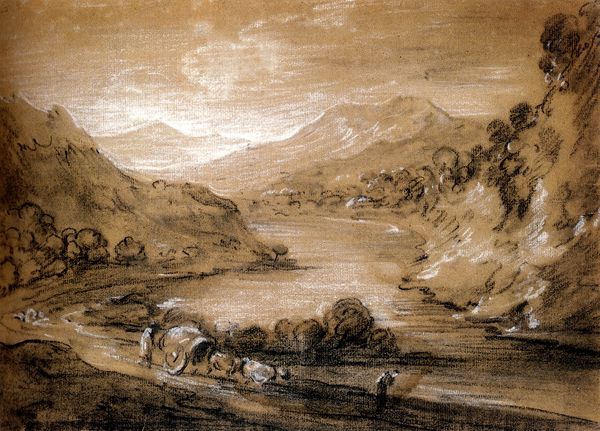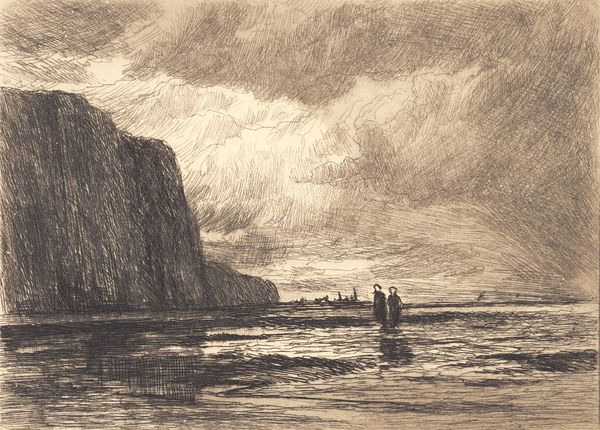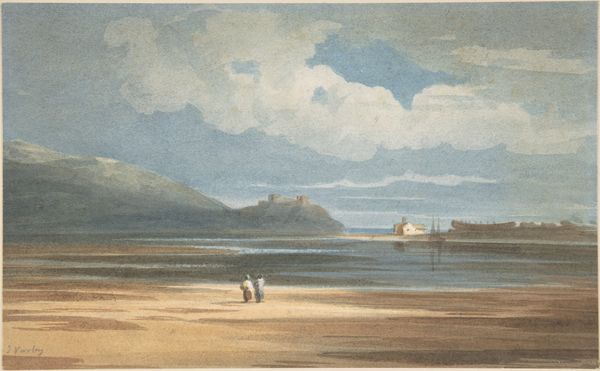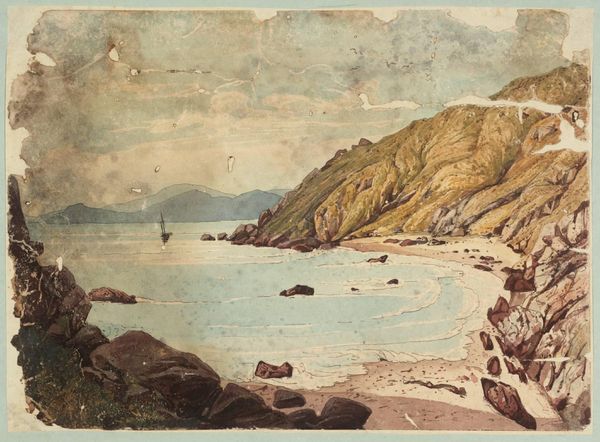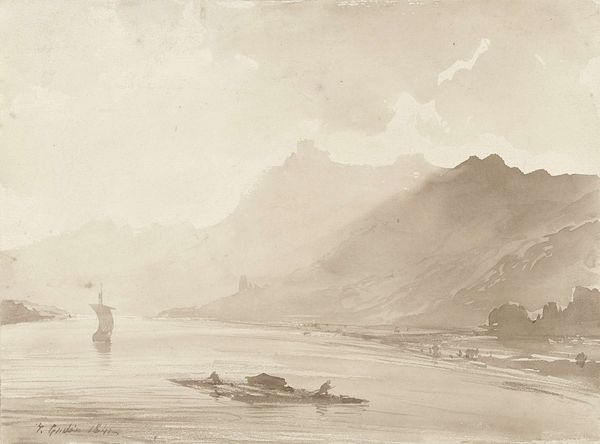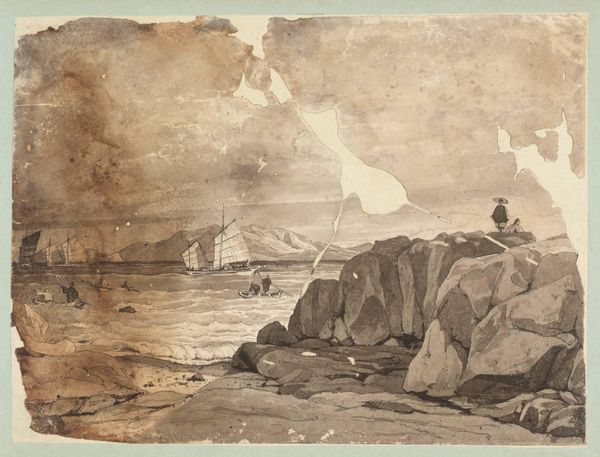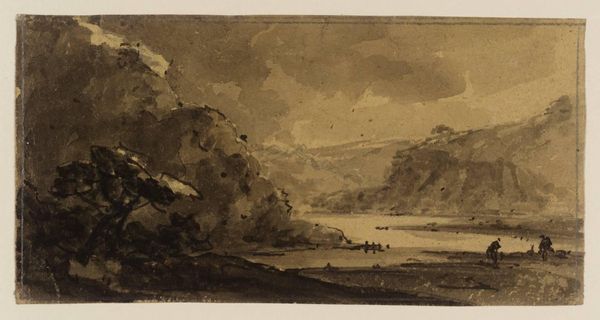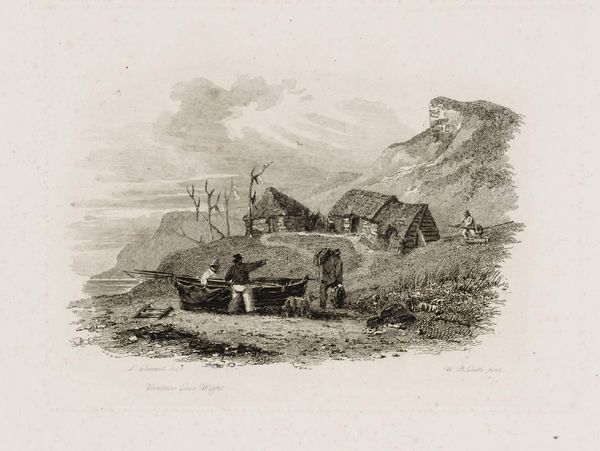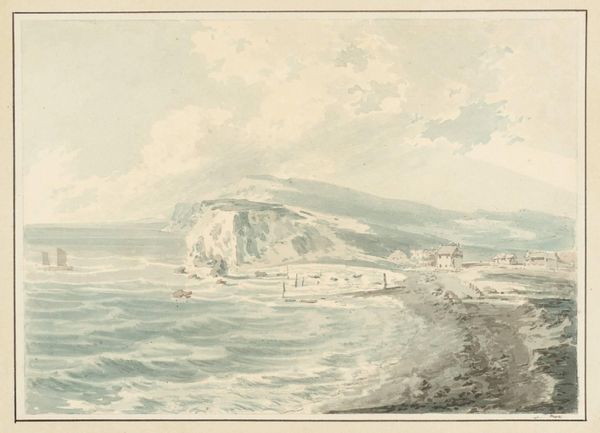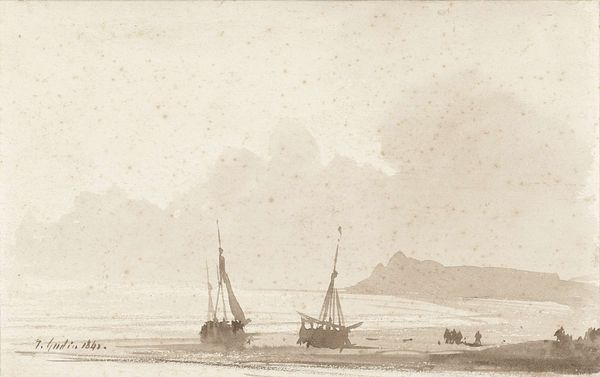
drawing, watercolor
#
drawing
#
landscape
#
watercolor
#
romanticism
#
watercolor
Copyright: Public Domain: Artvee
Editor: This is "Lyme Regis, Dorsetshire, a Squall," a watercolor and drawing attributed to Thomas Sully. The muted browns and grays really create a dramatic atmosphere; it almost feels like the air itself is heavy with impending rain. What catches your eye when you look at this? Curator: Ah, Sully. It whispers of turbulent emotions, doesn't it? Look how the artist used wash techniques—transparent layers—to create depth in the clouds and the relentless waves. There is also an evocative dance between the grounded figures in the foreground and that distant sailboat, seemingly caught in the squall’s grip. It is almost biblical, that tiny boat against that turbulent sky. Tell me, does the monochromatic palette strike you as a limitation, or does it intensify the scene's emotional charge? Editor: I think it adds to the feeling. Color might distract from the raw, almost bleak, feeling. There's this really dynamic tension here; the people on the beach are wading, working perhaps, and yet the ship appears in danger. It creates such an anxiety. Is that a common theme in Romantic art? Curator: Absolutely! Romanticism often explored the power of nature against the fragility of human endeavor, emphasizing sublime awe tinged with fear. It makes me ponder: were I on that beach, what story would I tell? Would I fret about the boat or relish in nature's performance? Editor: That's a great question! I think that Sully captures the dichotomy. Curator: Indeed. This piece whispers about vulnerability, about our connection to the natural world... both its beauty and its peril. Editor: I'm definitely going to look at other Romantic landscapes differently now. The emotional impact is so much more deliberate than I first realized. Curator: Isn’t it wonderful when art rewires our perceptions? Until our next shared glimpse!
Comments
No comments
Be the first to comment and join the conversation on the ultimate creative platform.
